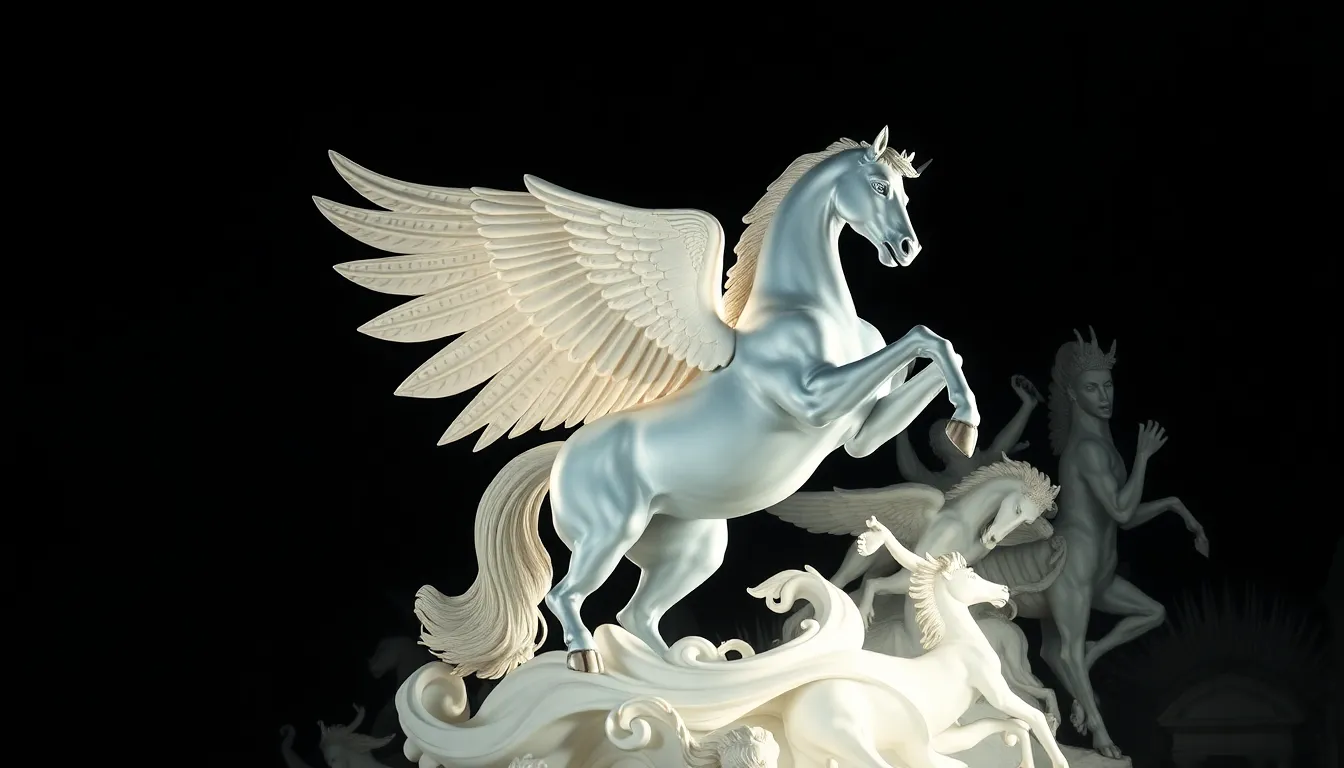The Symbolism of Pegasus in Music and Performing Arts
I. Introduction
Pegasus, the iconic winged horse of Greek mythology, is a figure that transcends the boundaries of time and culture. Born from the blood of Medusa, Pegasus has become a symbol of inspiration, creativity, and freedom. In the realms of music and performing arts, the symbolism of Pegasus resonates deeply, offering a rich tapestry of meanings that artists have drawn upon throughout history.
This article aims to explore the multifaceted symbolism of Pegasus, examining its origins, its evolution in art and literature, and its profound influence on music and performing arts. By delving into the various interpretations and representations of Pegasus, we can gain insight into the enduring legacy of this mythological creature.
II. Historical Context of Pegasus
The myth of Pegasus has its origins in ancient Greek mythology, where he is often associated with the Muses, the goddesses of inspiration in the arts and sciences. According to legend, Pegasus sprang from the neck of Medusa when she was slain by Perseus. This remarkable birth situates Pegasus at the intersection of beauty and horror, a theme that has resonated throughout various artistic expressions.
Over the centuries, Pegasus has appeared in countless works of art and literature. From ancient pottery depicting the winged horse to Renaissance paintings that celebrate its ethereal beauty, Pegasus has evolved from a mythological figure into a powerful symbol of artistic inspiration. As this symbolism transitioned into the realm of music and performing arts, artists began to interpret Pegasus in ways that reflected contemporary themes of creativity and aspiration.
III. Pegasus as a Symbol of Inspiration and Creativity
Pegasus is perhaps best known for its association with artistic inspiration. The image of the winged horse captures the essence of creativity soaring to new heights. Many composers and musicians have drawn upon the symbolism of Pegasus to express their own artistic journeys.
- Musical Compositions: Numerous compositions have been inspired by Pegasus, including works by classical composers such as Richard Strauss and contemporary artists like John Adams.
- Case Studies of Performances: Ballets, operas, and orchestral performances often incorporate the spirit of Pegasus, highlighting its role as a muse for choreographers and directors.
IV. Pegasus and Themes of Freedom and Aspiration
Pegasus is also interpreted as a symbol of freedom. The ability of the winged horse to soar through the skies embodies the human desire for liberation and transcendence. This theme is prevalent in various musical genres, from folk songs that celebrate the spirit of freedom to contemporary pop anthems.
Notable performances that express these themes often feature:
- Dance Interpretations: Choreographers have created works that utilize the imagery of flight to convey feelings of liberation.
- Song Lyrics: Many songs, across genres, include references to Pegasus as a metaphor for breaking free from constraints.
V. The Duality of Pegasus: Power and Vulnerability
The duality of Pegasus—its power as a mythical creature juxtaposed with a sense of vulnerability—offers rich material for exploration in music and performing arts. Pegasus is often depicted as a powerful being, yet its origins and the circumstances surrounding its birth reflect a deeper vulnerability.
This contrasting nature can be seen in:
- Musical Genres: From the grandiosity of orchestral works to the introspective tone of solo performances, different genres showcase Pegasus’s strength and fragility.
- Examples of Performances: Productions that delve into the emotional depths of Pegasus often highlight its struggles, portraying it as a creature that, despite its power, faces challenges.
VI. Cultural Variations of Pegasus in Music and Performing Arts
The symbolism of Pegasus is not confined to Greek mythology; it has been embraced and reinterpreted across various cultures. Different cultural contexts have influenced the depiction of Pegasus in music and performing arts.
- Global Interpretations: In Eastern cultures, Pegasus may be infused with local legends and artistic styles, creating unique representations.
- Musical Traditions: Various musical traditions incorporate the imagery of Pegasus, showcasing its versatility as a symbol.
VII. Contemporary Interpretations of Pegasus
Modern artists continue to draw inspiration from Pegasus, reinterpreting its symbolism to address current societal themes. The integration of technology and multimedia in contemporary performances has allowed for innovative representations of the winged horse.
Artists today explore:
- Digital Art: Many contemporary visual artists utilize digital media to depict Pegasus in dynamic and engaging ways.
- Societal Themes: Issues such as environmentalism, social justice, and personal identity are often explored through the lens of Pegasus, reflecting its enduring relevance.
VIII. Conclusion
In summary, the symbolism of Pegasus in music and performing arts reveals a rich and diverse tapestry of meanings. From its origins in Greek mythology to its contemporary interpretations, Pegasus serves as a powerful emblem of creativity, freedom, and the duality of strength and vulnerability.
The ongoing relevance of Pegasus highlights its ability to inspire artists across cultures and generations. As we continue to explore the depths of human experience through the arts, the legacy of Pegasus will undoubtedly endure, reminding us of the boundless potential of imagination and the ever-present desire for liberation.




